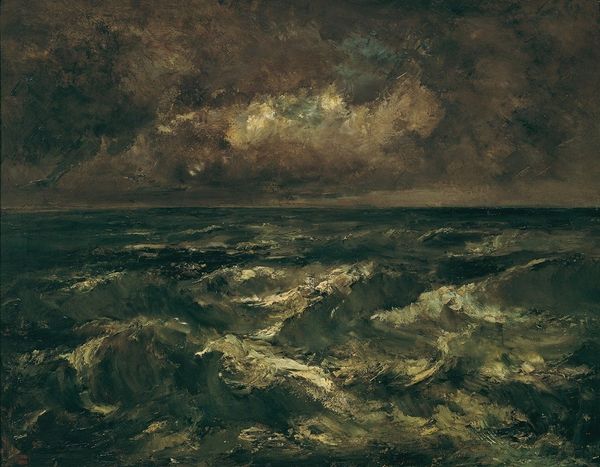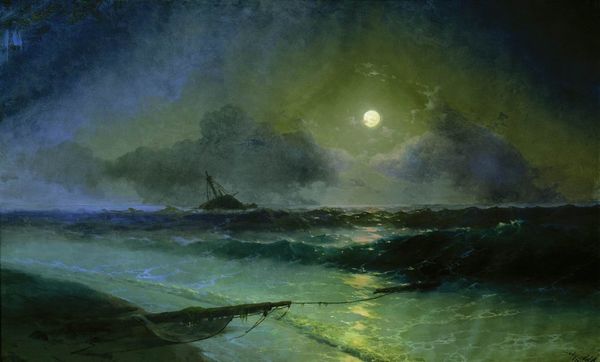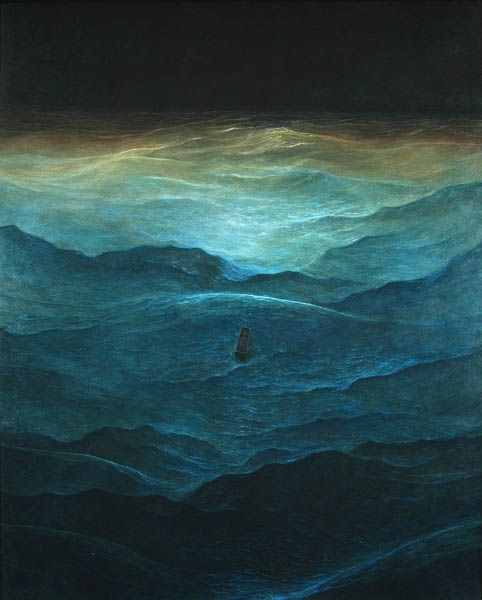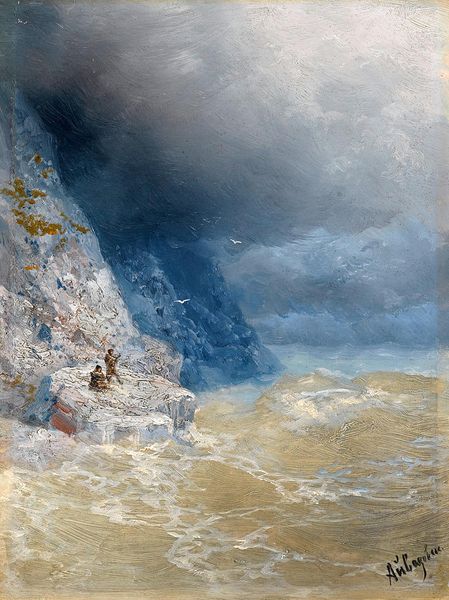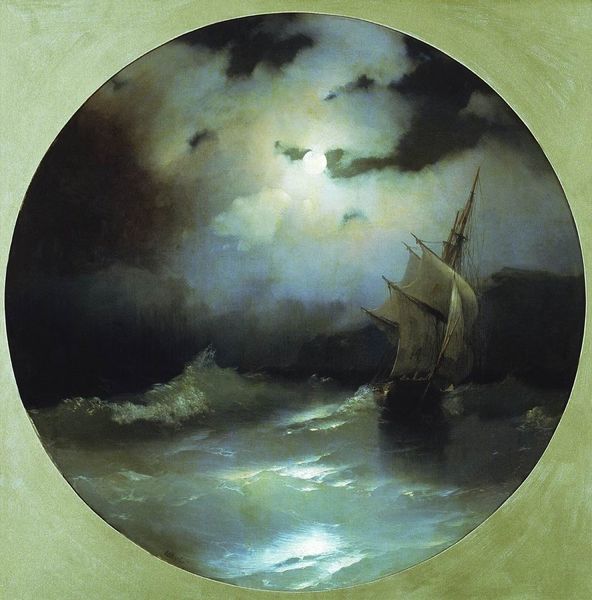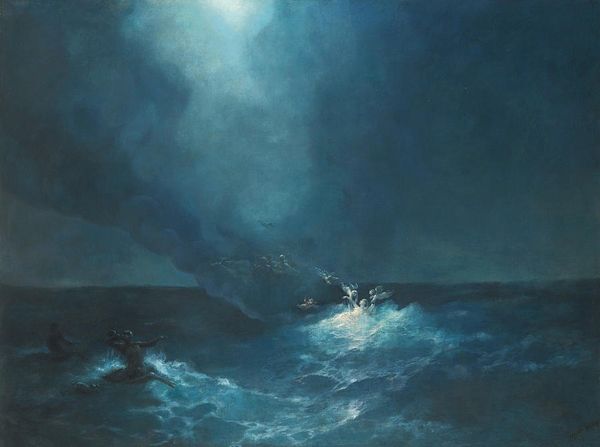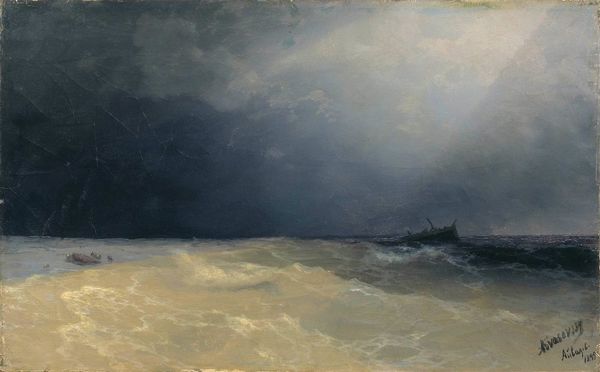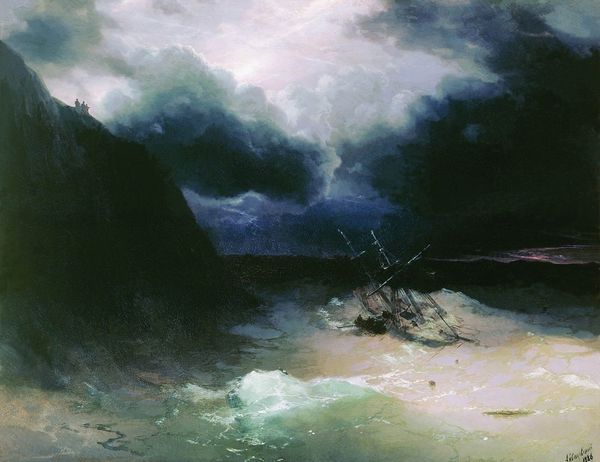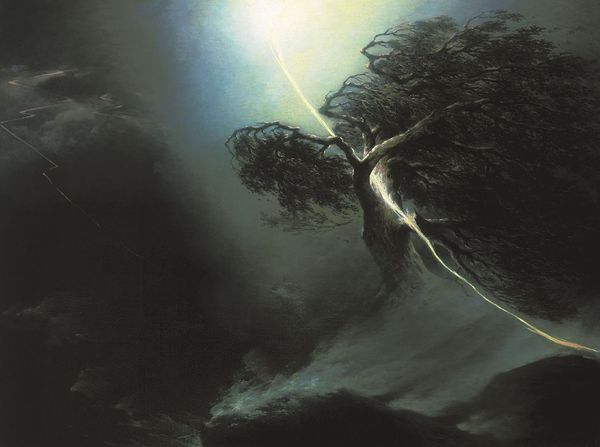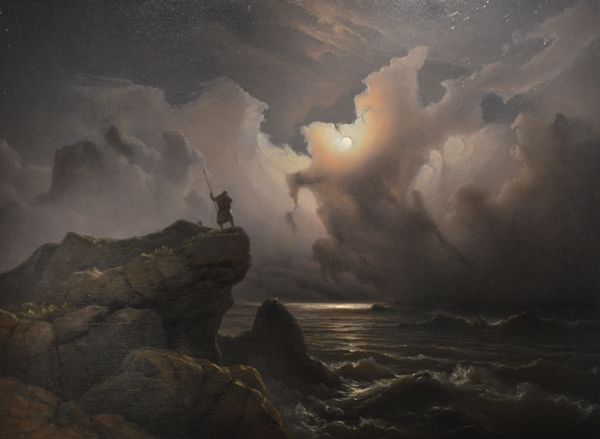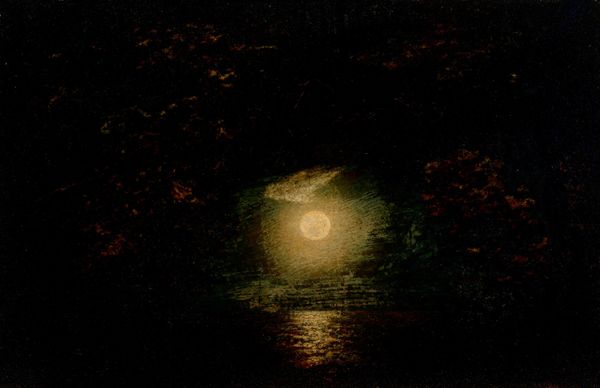
Copyright: Public domain
Curator: Oh, my. That's…whelming. In a good way! Is it meant to be this ominous? Editor: Indeed, "After the Storm. Moonrise," painted in 1894 by Ivan Aivazovsky, depicts a post-storm seascape. Its drama certainly lingers! I wonder what kind of paint he used and what ship the people where on? Curator: Drama is the word. The light...it’s as if the moon itself is holding its breath, watching this tiny little boat down there. It’s intense, almost biblical in its scale. How are things being created when nature causes distruction. Editor: Well, Aivazovsky was known for his seascapes. If you look closely, you notice how he contrasts the raw power of nature with this small, precarious human vessel. Think of the fisherman, sailors or merchants on that tiny vessel... the conditions! What was Aivazovsky wanting to say to the vistor about labor on the open sea. Curator: Precarious indeed! You know, it's funny; it's such a classic Romantic painting, and yet, when you look at it now, after everything…climate change and all, it takes on a whole other level of meaning, doesn't it? It could be about our whole planet. Like a metaphor? Editor: It does make you pause, I agree, particularly the material process used to make it; mixing paints on wooden boards. He was clearly interested in making sure that these types of people are remember, as it wasn't often captured. Its an early commentary of labour! The artist may have even talked with tradesmen to conceptualize the subject more completely. Curator: It also brings back that old romantic ideal of conquering and harnessing nature through steam. Very impressive how the composition feels alive. Well, it’s certainly something to consider, especially after looking closer at that intense moon and dramatic dark tones. Editor: True; a small little peek into 1894, on the sea after the storm; thank you!
Comments
No comments
Be the first to comment and join the conversation on the ultimate creative platform.
